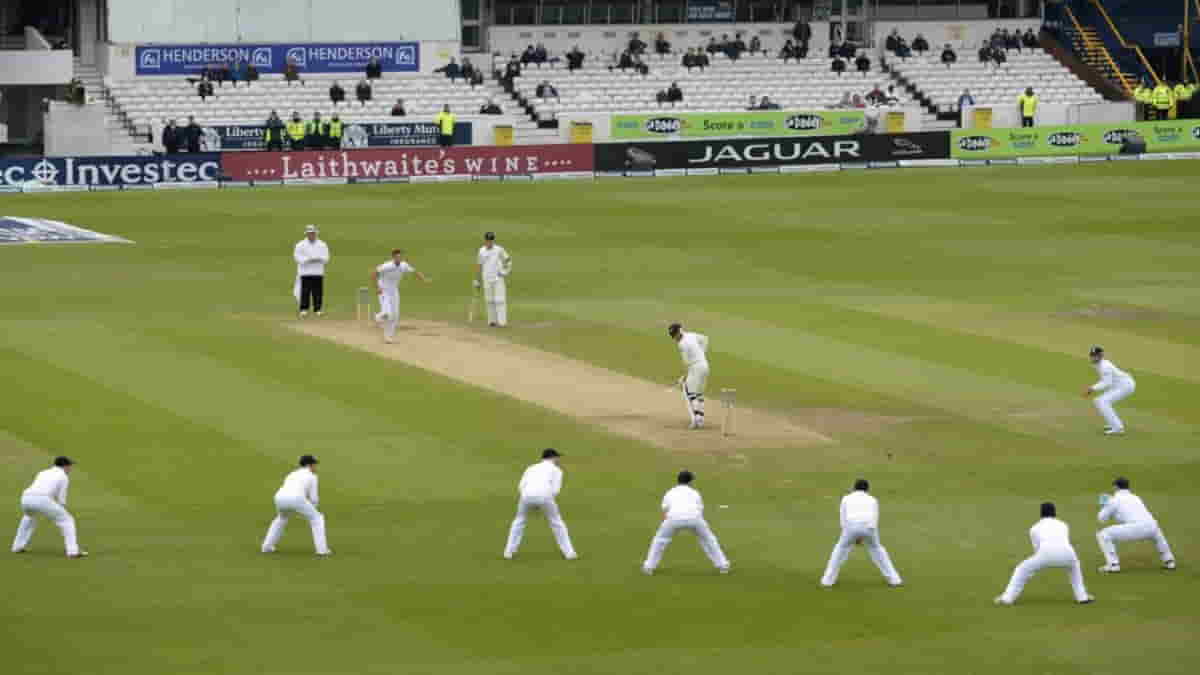 Source: Sportzcraazy
Source: Sportzcraazy
In cricket, there are several fielding positions that players take up on the field to strategically defend and attack during the game. Each fielding position has its own purpose and role in the game. Here’s a detailed guide to the most commonly used fielding positions in cricket:
Wicketkeeper: This position is directly across from the bowler’s end and right behind the stumps. The athlete allocated to this position wears gloves and pads.
Slip: The slip fielders stand behind the batsman on the off-side (usually between the wicket-keeper and the slips) and are positioned to catch an edge off the bat. Slip positions are numbered from first slip (closest to the wicket-keeper) to third slip.
Gully: The gully fielder stands on the off-side, slightly behind the slip fielders, and is positioned to catch an edge that goes wider than the slip area.
Point: The point fielder is positioned on the off-side, behind the batsman, and to the right of the cover fielder. The point’s main role is to stop runs and attempt run-outs.
Cover: The cover fielder stands on the off-side, to the right of the mid-off fielder. Their primary role is to field shots hit through the covers and to stop runs.
Mid-off: The mid-off fielder is positioned on the off-side, directly in front of the batsman. They primarily stop straight drives and prevent runs.
Mid-on: The mid-on fielder is positioned on the on-side, directly in front of the batsman. Their primary role is to stop shots hit straight down the ground and prevent runs.
Square leg: The square leg fielder is positioned on the on-side, square of the batsman, and closer to the boundary. They cover the area behind the batsman’s legs and are responsible for stopping leg-side shots.
Midwicket: The midwicket fielder is positioned on the on-side, between square leg and mid-on. They cover the region between mid-on and square leg and are responsible for stopping shots in that area.
Long leg: The long leg fielder is positioned on the on-side, closer to the boundary, behind square leg. They are stationed to field shots hit in the leg-side region towards the boundary.
Fine leg: The fine leg fielder is positioned on the on-side, close to the boundary line, and behind square leg. Their main role is to field shots hit fine towards the boundary.
Third man: The third man fielder is positioned on the off-side, closer to the boundary line, behind the slip fielders. They mainly field shots hit fine towards the boundary behind the wicketkeeper.
Deep point: The deep point fielder is positioned on the off-side, closer to the boundary, behind the cover fielder. They are stationed to field shots hit towards the deep cover region.
Long-off: The long-off fielder is positioned on the off-side, closer to the boundary, behind mid-off. Their primary role is to field shots hit straight down the ground towards the boundary.
Long-on: The long-on fielder is positioned on the on-side, closer to the boundary, behind mid-on. They are stationed to field shots hit straight down the ground towards the boundary.
Deep square leg: The deep square leg fielder is positioned on the on-side, closer to the boundary, behind square leg. They are stationed to field shots hit towards the deep square leg region.
These are the general fielding positions used in cricket. However, the captain and fielding team can modify and adapt these positions based on the game situation, bowler’s strategy, and the batsman’s style of play.
Also Read: What is umpire’s call in cricket? A Simple Explanation (cricfiles.com)
“Get more breaking news, cricket updates, fixtures, and trending news only on cricfiles.com. Follow us on Facebook or Twitter and Subscribe to our YouTube Channel today.”



